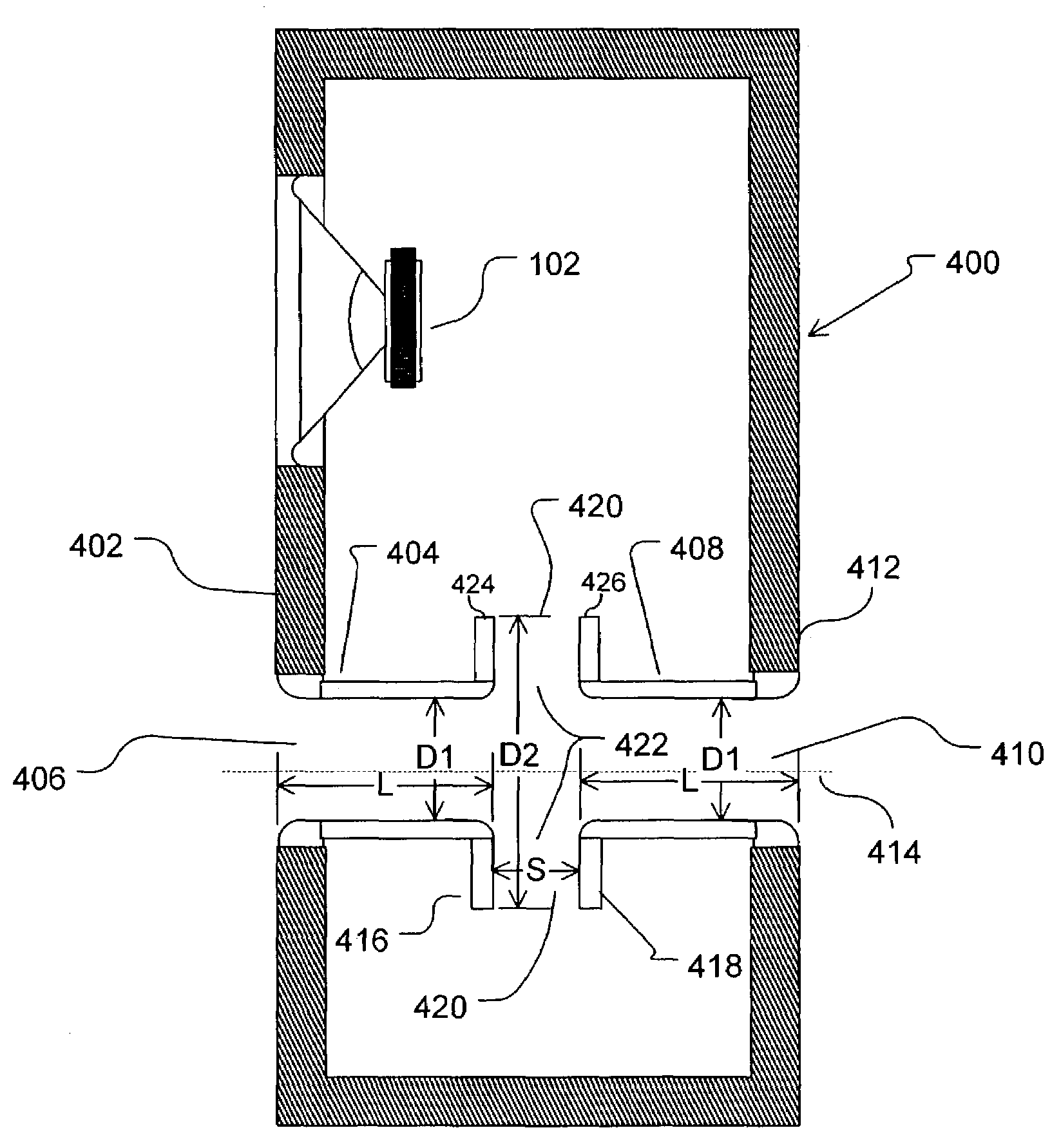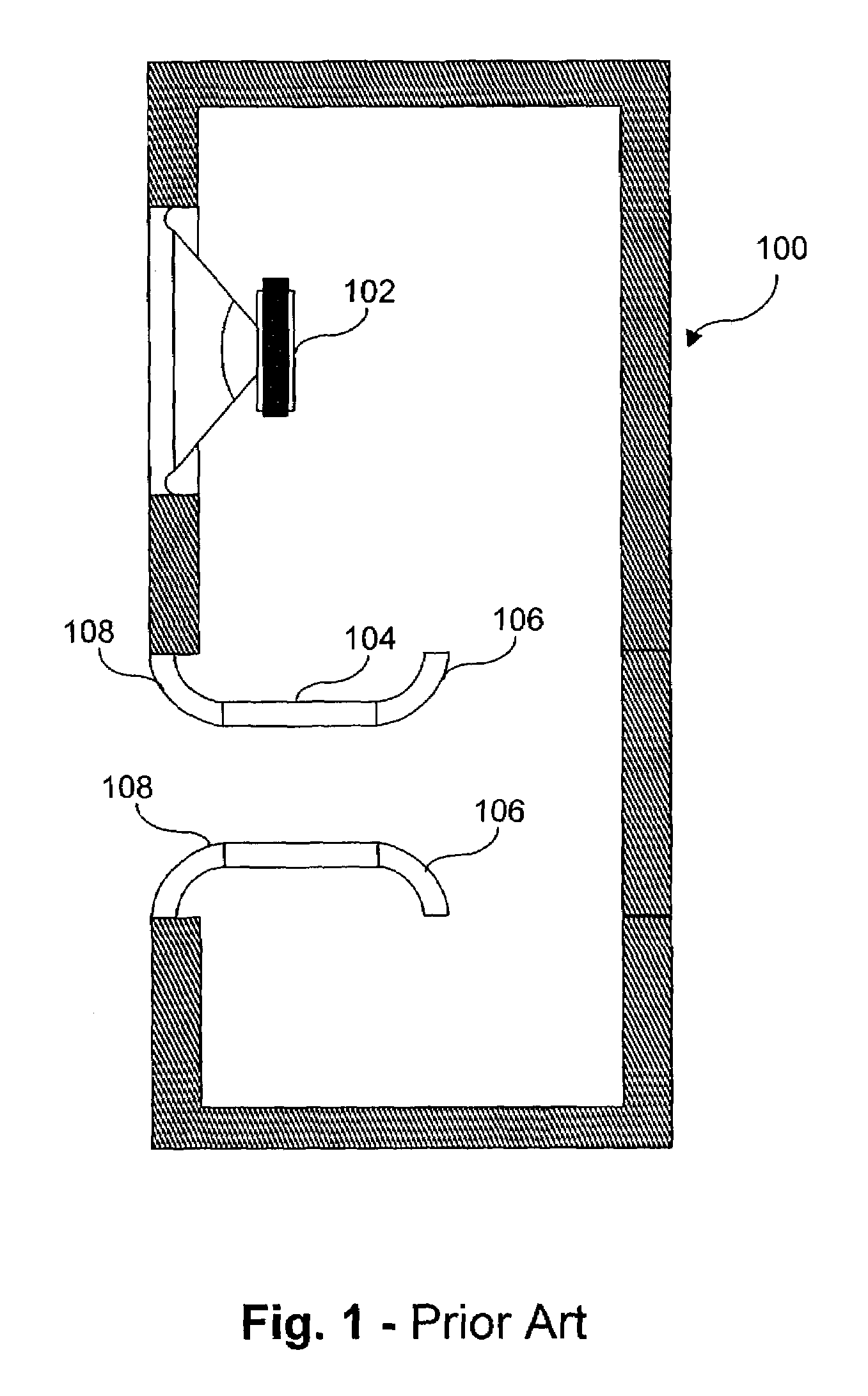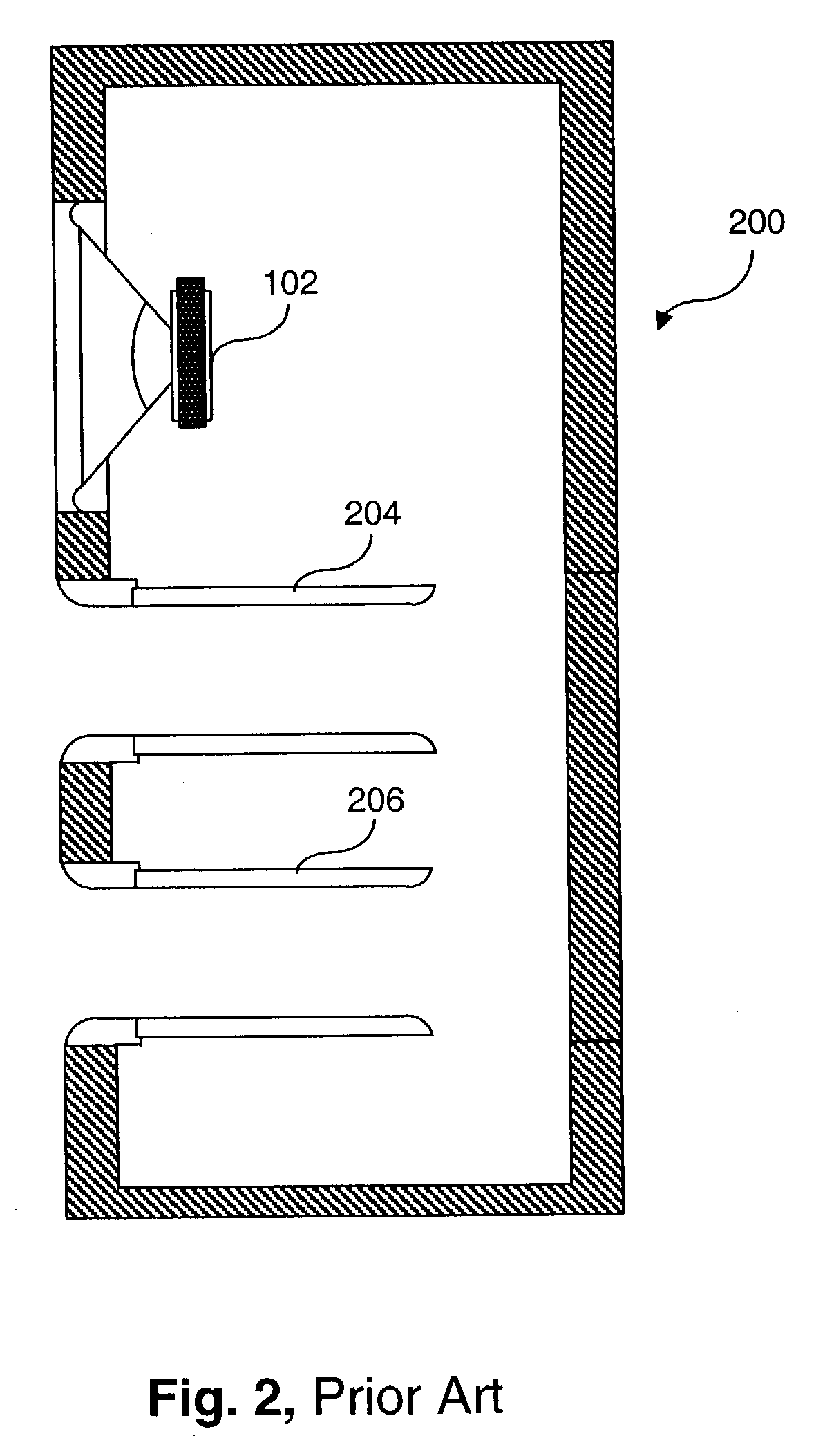Ported loudspeaker system and method with reduced air turbulence, bipolar radiation pattern and novel appearance
a loudspeaker and air turbulence technology, applied in the field of loudspeaker systems, can solve the problems of ineffective operation or operation, ineffective realization or operation of the intended function, and ineffective optimization of the theoretical design, so as to reduce the transmission of midrange frequencies, improve the porting arrangement, and reduce the turbulence and loss
- Summary
- Abstract
- Description
- Claims
- Application Information
AI Technical Summary
Benefits of technology
Problems solved by technology
Method used
Image
Examples
Embodiment Construction
[0022]As discussed above, there are various tradeoffs involved in the design of ducted ports for a loudspeaker system. Increases in cross-sectional area required to reduce turbulence and loss require increases in port length to achieve the required acoustic mass. The increased port length may be too large for the system dimensions and may also lead to organ pipe resonances at frequencies more likely to cause audible problems. Use of flared ends as part of the port structure, as shown in FIG. 1, may reduce turbulence and loss for a given cross-sectional area in the central part of the port, but the flared ends themselves contribute little to the required acoustic mass while making the port structure substantially larger. As noted above, U.S. Pat. Nos. 5,517,573 and 5,809,154 to Polk, et al. disclose a porting method and arrangement for reducing turbulence and loss which is more compact and offers certain other advantages in suppressing unwanted midrange transmission and organ pipe re...
PUM
 Login to View More
Login to View More Abstract
Description
Claims
Application Information
 Login to View More
Login to View More - R&D
- Intellectual Property
- Life Sciences
- Materials
- Tech Scout
- Unparalleled Data Quality
- Higher Quality Content
- 60% Fewer Hallucinations
Browse by: Latest US Patents, China's latest patents, Technical Efficacy Thesaurus, Application Domain, Technology Topic, Popular Technical Reports.
© 2025 PatSnap. All rights reserved.Legal|Privacy policy|Modern Slavery Act Transparency Statement|Sitemap|About US| Contact US: help@patsnap.com



